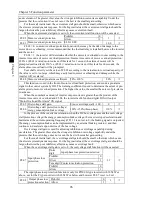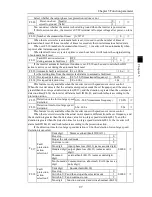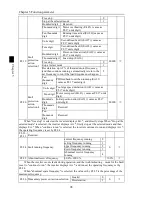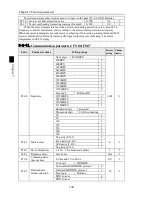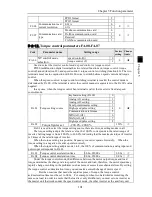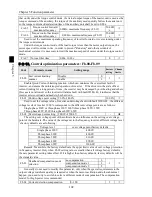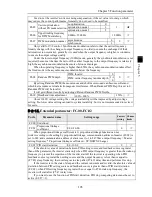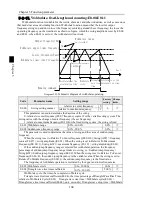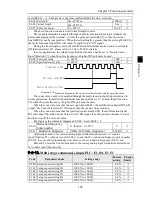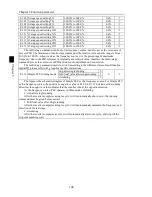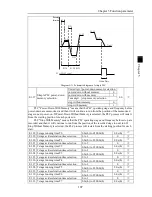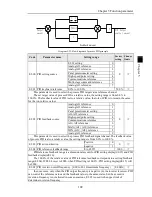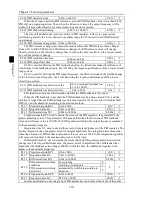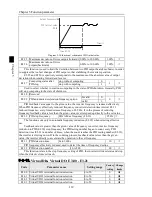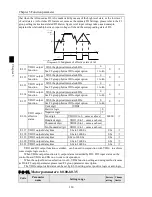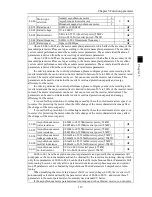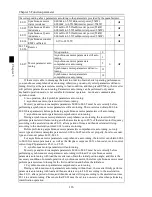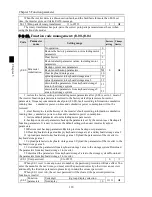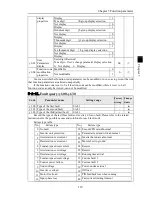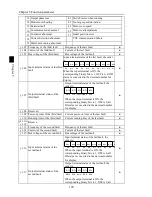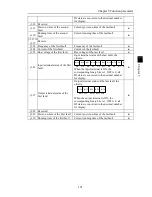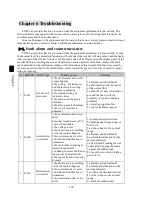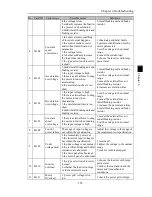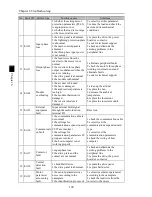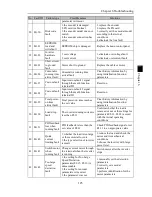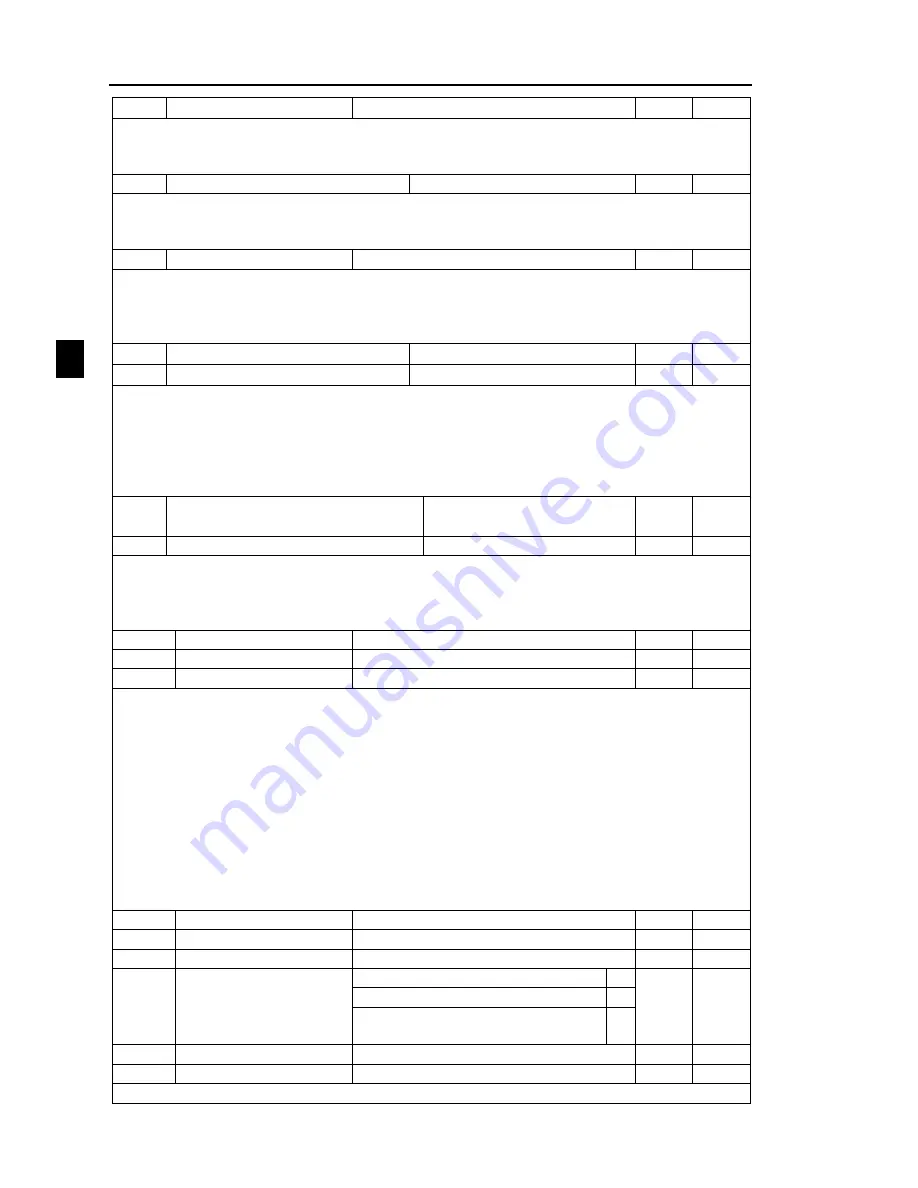
Chapter 5 Function parameter
110
Ch
ap
ter 5
E2.06 PID deviation limit
0.0% to 100.0%
0.0%
☆
When the deviation between PID reference value and PID feedback value is less than E2.06,
PID will stop regulating action. Thus, when the deviation is lesser, the output frequency will be
stable, it is especially effective for some closed-loop control occasions.
E2.07 PID differential limiting
0.00% to 100.00%
0.10%
☆
The role of the differential is more sensitive in PID regulator, is likely to cause system
oscillation, generally the role is limited to a smaller range, E2.07 is used to set PID differential
output range.
E2.08 PID reference change time 0.00s to 650.00s
0.00s
☆
The PID reference change time means the required time that PID reference value changes
from 0.0% to 100.0%.When the PID reference changes, the PID reference value will change
linearly according to the reference change time to reduce the adverse effects to the system caused
by a sudden reference change.
E2.09 PID feedback filter time
0.00s to 60.00s
0.00s
☆
E2.10 PID output filter time
0.00s to 60.00s
0.00s
☆
E2.09 is used for filtering the PID feedback quantity, the filter helps reduce the influence of
interference to the feedback quantity, but will bring the response performance of the process closed
loop system.
E2.10 is used for filtering the PID output frequency, the filter will weaken the sudden change
of the inverter output frequency, but it will also bring the response performance of the process
closed loop system.
E2.11 PID feedback loss detection value
0.0%: not judged feedback loss
0.1% to 100.0%
0.0%
☆
E2.12 PID feedback loss detection time
0.0s to 20.0s
0.0s
☆
This function code is used to determine whether the PID feedback is lost or not.
When the PID feedback is less than the PID feedback loss detection value(E2.11), and the
duration is longer than the PID feedback loss detection time(E2.12), the inverter will alarm fault
ID Err.31, and troubleshoot according to the selected method.
E2.13 Proportional gain KP1
0.0 to 200.0
80.0
☆
E2.14 Integration time Ti1
0.01s to 10.00s
0.50s
☆
E2.15 Differential time Td1
0.00s to 10.000s
0.000s
☆
Proportional gain KP1:Used to decide the extent of the PID regulator, the greater KP1, the
greater adjusting extent. This parameter 100.0 means that when the deviation of PID feedback
value and reference value is 100.0%, the PID regulator will adjust the output frequency command
to the maximum frequency.
Integration time Ti1: used to decide the extent of integral adjustment of the PID regulator. The
shorter integration time, the greater extent of integral adjustment The integration time means that
when the deviation of PID feedback value and reference value is 100.0%, the integration regulator
will successively adjust to the maximum frequency for the time.
Differential time Td1: used to decide the extent that the PID regulator adjusts the deviation
change rate. The longer differential time, the greater extent of adjustment The differential time
means that the feedback value changes 100.0% within the time, the differential regulator will
adjust to the maximum frequency.
E2.16 Proportional gain KP2
0.0 to 200.0
20.0
☆
E2.17 Integration time Ti2
0.01s to 10.00s
2.00s
☆
E2.18 Differential time Td2
0.00s to 10.000s
0.000s
☆
E2.19
PID parameter switching
conditions
PID parameter switching
deviation 1
no switching
0
0
☆
switching via terminals
1
automatically switching according to
deviation.
2
E2.20 Proportional gain KP2
0.0% to E2.21
20.0%
☆
E2.21 Integration time Ti2
E2.20 to 100.0%
80.0%
☆
In some applications, only one group of PID parameters can not meet the needs of the entire

